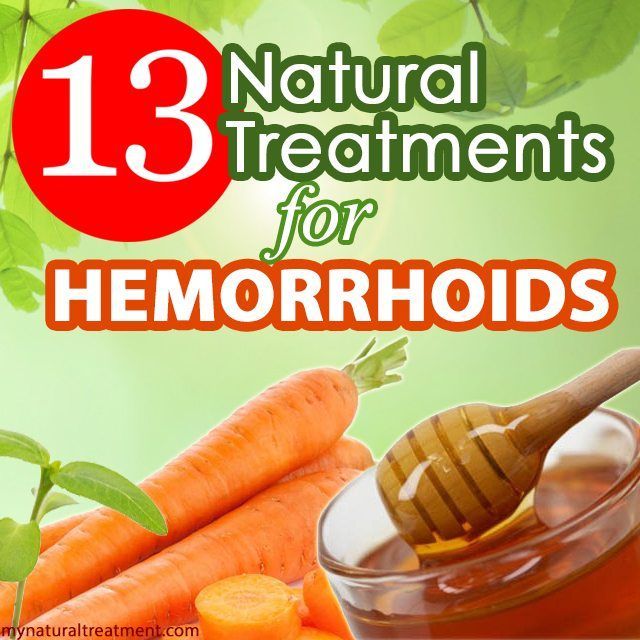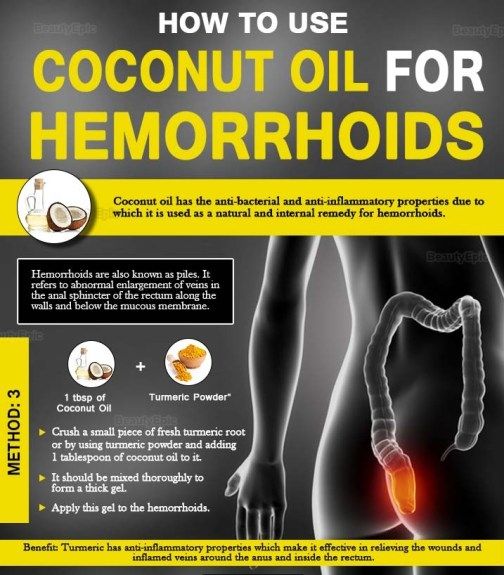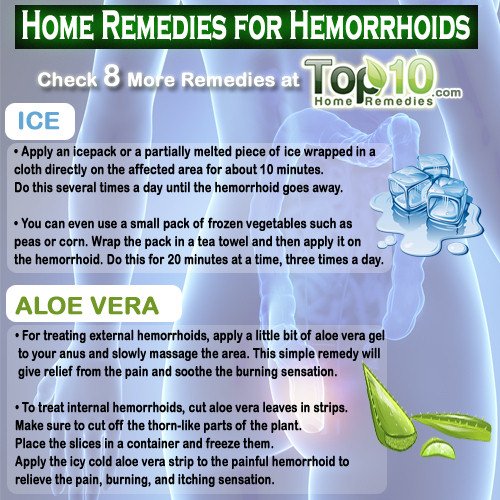Ways To Treat Hemorrhoids At Home
Disclaimer: Results are not guaranteed*** and may vary from person to person***.
Hemorrhoids are a very common condition especially in America where half the population will experience them by the time they turn 50. So exactly what are hemorrhoids? They are swollen and inflamed veins in the rectum, and while they affect men and women, men have an increased risk of developing them.
Hemorrhoids are painful and irritating, and they can make everyday life quite uncomfortable. How long a hemorrhoid takes to heal on its own depends on a few different factors.Thankfully, there are a number of hemorrhoids home remedies you can use to treat them naturally.
Improving Your Diet And Lifestyle
Precautions On How To Get Rid Of Hemorrhoids
A common concern is that hemorrhoids increase the risk of colorectal cancer, but thats not true. However, the two conditions do cause similar symptoms. This is why its important to mention your hemorrhoids to your health care provider. Even when a hemorrhoid is healed completely, a colonoscopy may be done to rule out other causes of rectal bleeding. According to the American Society of Colon and Rectal Surgeons , every person age 50 and older should undergo a colonoscopy to screen for colorectal cancer.
Don’t Miss: Epsom Salt Sitz Bath For Hemorrhoids
Give Yourself Permission To Go
Holding in your bathroom breaks can lead to constipation, meaning you need to strain more when you do go. That could cause pressure in your abdominal area and bring on hemorrhoids. Avoiding this excess strain is key, according to the American Society of Colon and Rectal Surgeons. Instead of focusing on how to treat hemorrhoids, find a restroom as soon as you need one to avoid them in the first place. Learn 10 more ways you didnt know you were using the toilet wrong.
Final Thoughts On How To Get Rid Of Hemorrhoids

- Hemorrhoids are a very common anorectal condition that affects millions of people around the world.
- Enlarged hemorrhoids are often associated with symptoms such as itching, mucus discharge or bleeding. Bleeding happens when hard stool damages the thin walls of the blood vessels in hemorrhoids.
- Avoidance of constipation is key when trying to get rid of hemorrhoids. Its important that you dont strain while using the bathroom, dont sit for an excessive period of time and clean yourself thoroughly when finished.
- Foods and herbal supplements that help relieve constipation can alleviate the symptoms of hemorrhoids. A high-fiber diet and drinking plenty of fluids are the most helpful dietary changes that you can make when it comes to how to get rid of hemorrhoids.
- If non-medical treatments dont work, there are relatively painless procedures that can be done to treat hemorrhoids. For extreme cases, an outpatient surgery called a hemorrhoidectomy may be required.
Also Check: What Can You Buy For Hemorrhoids
Home Treatment For Hemorrhoids
Many people find hemorrhoids somewhat embarrassing and prefer to treat them from the comfort of their own home. Luckily, a majority of the time, hemorrhoids are easily treated using the following home remedies:
Keep Your Bowels Moving
“The most important thing is to make sure you’re not constipated and having to bear down when you go to the bathroom,” Ramas says. Constipation can both lead to hemorrhoid flare-ups and make them last longer.
Drink plenty of fluids, preferably water — not alcohol and caffeine. These tend to dehydrate, which is the opposite of what you want.
“I found out that dairy was a huge culprit for me,” Adams says, “so I cut it out a little bit, and I had good results.”
Add fiber to your diet with fresh fruit, leafy green vegetables, whole grains, and bran. “It’s about fueling your body appropriately and giving yourself the nutrients that your body needs to function effectively,” Ramas says. Your doctor might also want you to take psyllium husk supplements.
Exercise can help keep you regular, too.
And when you feel the need to go, don’t wait. “You want to have a bowel movement as quickly and efficiently as possible,” she says.
Adams used a foot stool that wraps around the toilet to put her in a squatting position. “It’s like an ergonomic way to poop,” Ramas says. “If that helps some people, that’s definitely OK.”
You May Like: What To Use For Hemorrhoids During Pregnancy
Can You Use Home Remedies To Treat Hemorrhoids Without A Doctor
There are few effective home remedies for hemorrhoids to help you get relief from pain and discomfort. While its possible to get relief from hemorrhoids with these home remedies, it’s also important to remember to see your doctor if you have bleeding during bowel movements or your hemorrhoids dont improve after a week of home care.1 Some other conditions can cause rectal bleeding, so it’s vital to check with your doctor if that’s the case. If your condition worsens or you experience large amounts of bleeding, light headedness or dizziness, seek emergency care.1
Whom Do Hemorrhoids Affect
Although most people think hemorrhoids are abnormal, almost everyone has them. Hemorrhoids help control bowel movements. Hemorrhoids cause problems and can be considered abnormal or a disease only when the hemorrhoidal clumps of vessels enlarge.
Hemorrhoids occur in almost everyone, and an estimated 75% of people will experience enlarged hemorrhoids at some point. However only about 4% will go to a doctor because of hemorrhoid problems. Hemorrhoids that cause problems are found equally in men and women, and their prevalence peaks between 45 and 65 years of age.
You May Like: What Can I Use To Shrink Hemorrhoids
You May Like: Why Do Hemorrhoids Hurt So Bad
Do Prolapsed Hemorrhoids Hurt
Prolapsed hemorrhoids tend to be more painful when sitting as opposed to standing or lying down. They may also hurt more during a bowel movement.
Prolapsed hemorrhoids can be especially painful if a blood clot has formed within the hemorrhoid. This is known as a thrombosed hemorrhoid.
A thrombosed hemorrhoid isnt as dangerous as a blood clot in your heart, for example, but it can be very painful. A thrombosed hemorrhoid may need to be lanced and drained to relieve the pain.
A prolapsed hemorrhoid may also be extremely painful if its strangulated, which means the blood supply to the hemorrhoid has been cut off.
When Should I See My Doctor
Hemorrhoids are typically easy to treat and clear up on their own. In very rare cases, a hemorrhoid can cause complications.
Chronic blood loss from a hemorrhoid can cause anemia, a shortage of red blood cells. Internal hemorrhoids can also have their blood supply cut off, resulting in strangulated hemorrhoids that can cause extreme pain.
See a doctor if home treatments havent been effective after more than 2 weeks. Your primary care physician can diagnose and treat hemorrhoids. They can write prescriptions for medicated creams, ointments, and suppositories.
If these treatments dont work, a doctor may recommend treatments like rubber band ligation or surgery to remove the hemorrhoids.
Make an appointment to see a doctor right away if you notice rectal bleeding for the first time or if your rectal bleeding increases.
Read Also: What Do Hemorrhoids Come From
What Is The Treatment For Hemorrhoids
For grades, I, II, and III hemorrhoids that have not responded to conservative management, office-based treatment methods are frequently employed. Reducing blood flow to the hemorrhoidal sac is the main objective of these treatments:
Rubber ligation
Rubber band ligation involves wrapping a small elastic band around the base of the hemorrhoids. The band holds the hemorrhoids in place, causing the hemorrhoids to contract and the surrounding tissue to scar as it heals. To completely remove the hemorrhoids, 2-4 procedures must be performed 6-8 weeks apart.
Mild discomfort or tightness , bleeding, and infection are among the rare complications.
Sclerotherapy
Sclerotherapy involves injecting a sclerotic substance into the submucosa of the hemorrhoidal sac, which sets off an inflammatory response and causes fibrotic tissue to develop that interrupts the blood supply to the hemorrhoids. There are many sclerotic agents available, such as quinine, ethanolamine, and hypertonic saline, and 5% phenol in almond or vegetable oil.
Although rare, the injection can result in and prostatic abscess. People with a high fever and postoperative discomfort should be closely monitored.
Infrared photocoagulation
With infrared photocoagulation, your physician will produce a tiny burn to remove tissue and gently seal the ends of the hemorrhoids, causing them to close off and shrink. Prolapsed hemorrhoids respond best to this treatment method.
Risk Factors And Aftercare

A sitz bath carries very little risk of harm because its a noninvasive treatment. The most common adverse event associated with sitz baths is an infection of the perineum, but this rarely occurs. This may happen if youre caring for a surgical wound and dont clean the tub or plastic bath thoroughly. Never share your sitz bath with anyone else. Each person should have their own.
Stop using sitz baths and contact your doctor if the pain or itching worsens, or if your perineum becomes red and puffy.
If sitz baths bring you relief, your doctor will probably recommend taking three or four per day until the source of the itching, irritation, or pain is healed. After a sitz bath, you may immediately return to normal activities unless your doctor has told you otherwise.
Recommended Reading: How To Treat Chronic Hemorrhoids
How Can I Treat Hemorrhoids At Home
You can most often treat your hemorrhoids at home by:
- Eating foods that are high in fiber
- Taking a stool softener or a fiber supplement
- Drinking enough fluids every day
- Not straining during bowel movements
- Not sitting on the toilet for long periods of time
- Taking over-the-counter pain relievers
- Taking warm baths several times a day to help relieve pain. This could be a regular bath or a sitz bath. With a sitz bath, you use a special plastic tub that allows you to sit in a few inches of warm water.
- Using over-the-counter hemorrhoid creams, ointments, or suppositories to relieve mild pain, swelling, and itching of external hemorrhoids
Soaking With Warm Water
Soaking in warm water is an excellent treatment to reducing the swelling and pain caused by thrombosed external hemorrhoid. And also, soaking in warm water can make the sphincter muscles become relaxed, since thrombosed external hemorrhoid also caused by the level of tension in the sphincter muscle.
This treatment is easy to do, simply by immersing the buttocks area into warm water about 20-30 minutes every day for 2-3 times. It proved powerful enough to eliminate the existing lump in the an*s area. In addition, you can also add salt into it, this will help to increase the circulation and reduce the itching caused by thrombosed external hemorrhoid.
Don’t Miss: What Causes Hemorrhoids During Pregnancy
What To Wear How To Sleep And Other Practical Tips For Hemorrhoid Sufferers
From chronic itching to excruciating pain, your hemorrhoids may cause a lot of discomfort that can affect your day-to-day activities, as well as your sleep.
At Midwest Hemorrhoid Treatment Center in Creve Coeur, Missouri, our experienced physician, Dr. Betsy Clemens, has more than two decades of experience helping those suffering with hemorrhoids get relief. We want to share with you some of our best at-home treatments to help you manage your hemorrhoid symptoms.
Read Also: How To Treat Hemorrhoids After Diarrhea
What Are The Treatments For Hemorrhoids
If at-home treatments for hemorrhoids donât help you, you may need a medical procedure. There are several different procedures that your provider can do in the office. These procedures use different techniques to cause scar tissue to form in the hemorrhoids. This cuts off the blood supply, which usually shrinks the hemorrhoids. In severe cases, you may need surgery.
Read Also: Can Vitamin B12 Cause Hemorrhoids
Read Also: Is Preparation H Good For Bleeding Hemorrhoids
Add Fiber To Your Diet
Adding fiber to your diet can help relieve constipation by making stools softer and easier to pass. To increase your fiber intake, your healthcare provider may recommend a bulking agent, such as psyllium. This is a high-fiber supplement available at most grocery stores and drugstores. Eating more fiber-rich foods will also help. There are two types of fiber:
-
Insoluble fiber is the main ingredient in bulking agents. Its also found in foods such as wheat bran, whole-grain breads, fresh fruits, and vegetables.
-
Soluble fiber is found in foods such as oat bran. Although soluble fiber is good for you, it may not ease constipation as much as foods high in insoluble fiber.
Read Also: What Kind Of Doctor Treats Hemorrhoids
Epsom Salts & Glycerin
This home remedy works much like the Sitz Bath, but instead can be done in the bathtub, or at a much more local level by using a gauze pad. To use this remedy, mix 2 tablespoons of Epsom Salts with 2 tablespoons of Glycerin, then apply the mixture to a gauze pad and place the pad over the hemorrhoid for about 15-20 minutes. You may repeat this process every 4 to 6 hours until the pain subsides.
Don’t Miss: How To Treat Grade 3 Hemorrhoids
How Can I Treat My Hemorrhoids
You can most often treat your hemorrhoids at home by
- taking a stool softener or a fiber supplement such as psyllium or methylcellulose
- drinking water or other nonalcoholic liquids each day as recommended by your health care professional
- not straining during bowel movements
- not sitting on the toilet for long periods of time
- taking over-the-counter pain relievers such as acetaminophen, ibuprofen, naproxen, or aspirin
- sitting in a tub of warm water, called a sitz bath, several times a day to help relieve pain
Applying over-the-counter hemorrhoid creams or ointments or using suppositoriesa medicine you insert into your rectummay relieve mild pain, swelling, and itching of external hemorrhoids. Most often, doctors recommend using over-the-counter products for 1 week. You should follow up with your doctor if the products
- do not relieve your symptoms after 1 week
Most prolapsed internal hemorrhoids go away without at-home treatment. However, severely prolapsed or bleeding internal hemorrhoids may need medical treatment.
When Hemorrhoid Surgery May Be Necessary

Very few people fewer than 10 percent of all adults who see a doctor because of symptomatic hemorrhoids will require a surgical operation.
Surgery to remove hemorrhoids is called a hemorrhoidectomy.
Your doctor may recommend a hemorrhoidectomy if:
- You have large external hemorrhoids
- You have both internal and external hemorrhoids
- An internal hemorrhoid has prolapsed
- You have excessive bleeding
In a hemorrhoidectomy, the doctor makes a small incision to remove the hemorrhoid and surrounding tissue before closing the wound with stitches.
A hemorrhoidectomy is performed in an operating room and can be done under general anesthesia, in which you are unconscious and unable to feel pain.
Hemorrhoidectomy is associated with postoperative pain, but the procedure is successful for 95 percent of cases.
More recently, another option aimed at avoiding the postoperative pain of a hemorrhoidectomy has become available, called a stapled hemorrhoidopexy. A circular stapling device pulls the hemorrhoidal tissue upward and to its normal position, stapling it in place. The staples eventually fall out over time.
According to a study published in the journal Techniques in Coloproctology, in the long term, patient satisfaction, resolution of symptoms, quality of life, and functional outcome appeared similar among patients after stapled hemorrhoidopexy and hemorrhoidectomy. But other sources note that stapling has been associated with a greater risk of recurrence and rectal prolapse.
Recommended Reading: What Doctor Would You See For Hemorrhoids